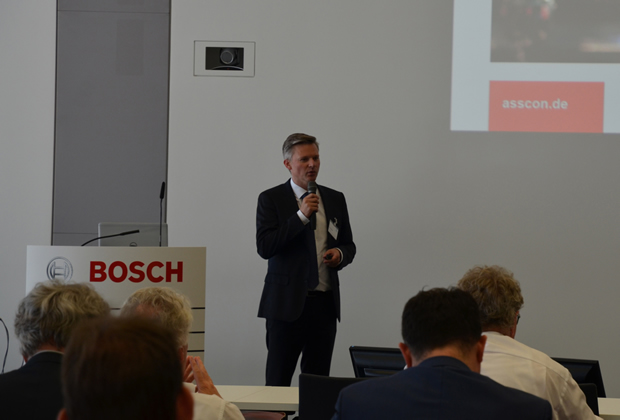The German Research Association 3-D MID e.V. takes new member
ASSCON Systemtechnik Elektronik GmbH has now become a member of the German Research Association 3-D MID e.V. The association consists of some 100 members from universities, R&D institutes and industrial companies. Founded in 1992 in the German city of Erlangen for the introduction and advancement of the MID technology, the association is dedicated to the support of the multifaceted and interdisciplinary performance requirements of this sophisticated electronics circuit technique.
It is the overriding aim of the association, in the meantime located in Nuremberg, to promote and extend the 3-D MID technology to novel applications and to provide even more advanced engineering. With its outstanding experience in advanced vapor-phase soldering technology, ASSCON now contributes to the 3-D MID community with its valuable expertise.
“The affiliation of ASSCON to the 3-D MID association was a step long overdue. Already a large number of our customers are working on complex products which are very challenging in their MID technology,“ ASSCON’s CEO Claus Zabel comments. “The vapor-phase soldering technology is the perfect fit for these applications as the heat is uniformly transferred across the entire printed circuit board assembly. The homogenous heat transport takes place regardless of different components, sizes and masses and therefore prevents any damaging mechanical stress within the board assembly”.
Molded Interconnect Device (MID)
MIDs are injected molded thermoplastic parts with integrated metallic circuit traces serving as the substrate for electronic components. They can provide enormous technical and economic potential and also offer a remarkabley improved ecological behavior performance in comparison to conventional printed circuit boards, which they will however not replace but complement. Key markets are automotive electronics and telecommunications, and also computer equipment, household appliances and medical electronics.
“In many R&D projects, the necessary innovations are postponed or cannot even be realised since experienced and qualified industrial partners aren’t available. It is the aim of ASSCON to provide support and, in joint efforts together with other partners, drive forward those projects. Our broad machine portfolio and especially the equipment for prototyping and small series production are the perfect solution for short-term assistance in projects”, says Axel Wolff, global sales Manager, as he underlines ASSCON’s role during the company presentation at the 27th member’s meeting of the Research Association 3-D MID.
“We are looking forward to developing this ground-breaking technology via joint efforts. As we all know, technological improvements aren’t fast-selling items but more a field of intensive R&D work where materials such as thermoplastics and bio-compatible substances have to be analysed, packaging and interconnect techniques for 3-D MID adapted, highly efficient manufacturing systems designed and the MID production competence in Europe broadened. In addition to that, standards and norms in the course of the further advancement of this technology have to be created”.
Vapor-phase soldering technology
Vapor-phase soldering is regarded as the ideal procedure for today's demanding electronic board assemblies manufacturing, because the use of vapor as the transfer media for heat energy is one of the most efficient technologies for heating-up PCB assemblies. The coefficient of performance is much more higher than traditional convection heating. Using a special liquid (GALDEN) an oxygen-free sphere is provided in the chamber in which the complete preheat and soldering procedures take place without any oxidation. Electronic board assemblies can therefore be soldered error-free, practically regardless of design. Easy and flexible adjustments of temperature gradients ensure the optimum, perfectly reproducible temperature profile for every product. This renders time-consuming and costly programs of experiments and set-up procedures of manufacturing lines superfluous – right from the prototyping up to high-volume production. Subsequently, a remarkable amount of time and money can be saved and, at the same time, continually high product quality is achieved.











